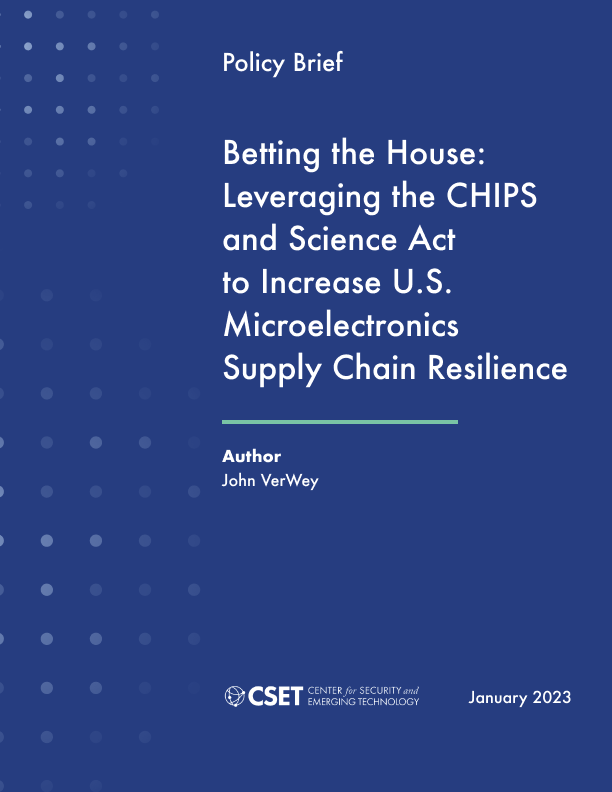Executive Summary
In August 2022, the CHIPS and Science Act appropriated over $52 billion to protect and promote the domestic U.S. semiconductor industry. Coverage of the CHIPS Act has primarily focused on the $39 billion in incentives allocated to subsidize the construction of new semiconductor fabrication facilities in the United States.
However, the CHIPS Act also authorizes an investment tax credit as well as billions of dollars allocated to increase production and innovation in other associated parts of the microelectronics supply chain. This includes specific provisions related to manufacturing mature technologies, advanced packaging, a research and development network, information and communications technology security, workforce support, and wireless supply chain innovation.
This paper contends that, if appropriately allocated, the funds provided by these provisions present the United States with a once-in-a-generation opportunity to increase microelectronics supply chain resilience far beyond re-shoring semiconductor fabrication. In support of this argument, this paper focuses specifically on the two ends of the microelectronics supply chain: upstream raw materials inputs, and downstream assembly, test, and packaging (ATP) of finished microelectronics. This paper’s key findings and recommendations include:
- U.S. production of materials consumed by the semiconductor industry is limited and U.S.-based ATP capacity is low, making up only 3 percent of global capacity.
- Efforts to re-shore semiconductor fabrication will not meaningfully increase supply chain resilience if there is no commensurate effort to re-shore materials production and ATP capacity.
- CHIPS Act provisions provide the executive branch with significant flexibility on implementation. Though not the primary focus of the CHIPS Act, targeted funding could increase U.S. production of materials consumed in semiconductor fabrication and ATP capacity, increasing overall microelectronics supply chain resilience.
- U.S. policymakers should identify specific technology supply chain chokepoints and opportunities to target investments accordingly. This paper identifies several opportunities related to chemical production and recycling as well as substrate and printed circuit board manufacturing.
